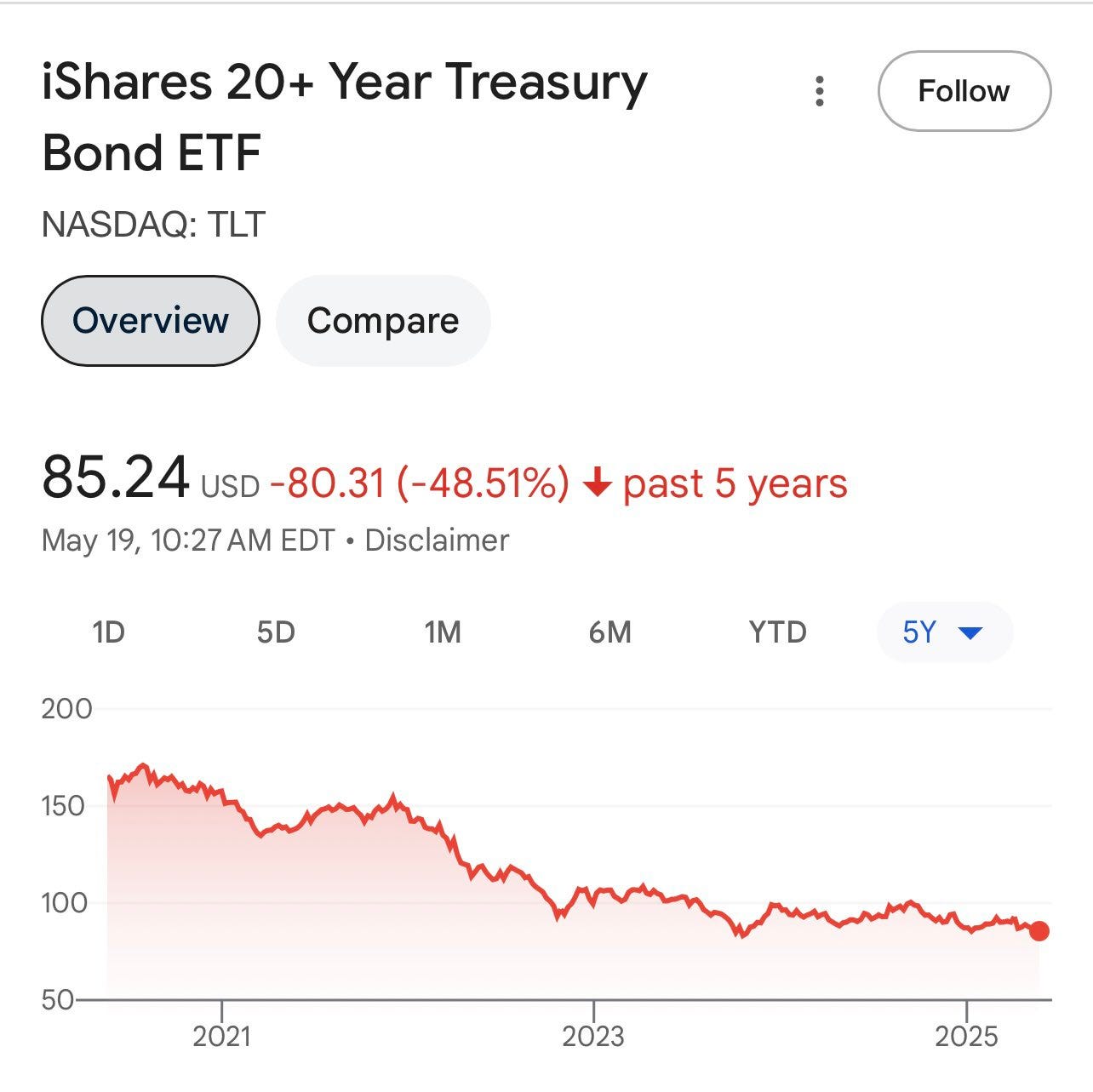U.S. loses its last AAA rating
Moody's downgrade and what it means for your portfolio
Market Sentiment delivers data-backed, actionable insights for long-term investors. Join 49,000 other investors to make sure you don’t miss our next briefing.
Here’s a fundamental truth about the U.S. economy and stock market that most people overlook — For the last 40 years, the prosperity we experienced was due to the significant tailwind provided by continuously falling interest rates.
For asset prices, interest rates are like gravity. The higher the interest rate, the greater the downward pull. Here’s Buffett explaining the same way back in ‘99.
Interest rates act on financial valuations the way gravity acts on matter: The higher the rate, the greater the downward pull. That's because the rates of return that investors need from any kind of investment are directly tied to the risk-free rate that they can earn from government securities.
So if the government rate rises, the prices of all other investments must adjust downward, to a level that brings their expected rates of return into line. Conversely, if government interest rates fall, the move pushes the prices of all other investments upward. The basic proposition is this: What an investor should pay today for a dollar to be received tomorrow can only be determined by first looking at the risk-free interest rate.
Consequently, every time the risk-free rate moves by one basis point— by 0.01%—the value of every investment in the country changes. People can see this easily in the case of bonds, whose value is normally affected only by interest rates. In the case of equities or real estate or farms or whatever, other very important variables are almost always at work, and that means the effect of interest rate changes is usually obscured.
Nonetheless, the effect—like the invisible pull of gravity-is constantly there.
With Moody’s downgrading the U.S. credit rating from Aaa to Aa1, the U.S. lost its last triple-A rating, and we are now looking at the highest interest rates since the 2007 crisis!
Bonds are cool again?
With the 30-year yield hovering at 5%, bonds alone can offer a meaningful return, reducing the need to chase equity risk. Bonds are also effective in providing protection from downside risk.
But if the interest rates keep rising, the bonds are in for a tough time. Someone who bought a 20-year treasury ETF in 2020 is now down ~48%. (plus the yield provided in 2020 was negligible).
The good news is that if you are thinking about getting some bond exposure, a 5% starting yield provides a significantly healthier cushion than the near-zero yields of 2020.
Importance of safe haven assets
While most concerns related to a U.S. debt default are overblown, it's worth considering, given the rising interest rates. Every 1% increase in interest rates adds $350 billion to the annual deficit.
The Fed is in a tight spot — if it cuts interest rates, it risks reigniting inflation. If they raise it, they will worsen the debt issues, as over $14 trillion of U.S. debt matures within the next 3 years.
It’s hard to argue that the current administration would be one that would take the tough choice of cutting spending to get our finances in order. In fact, the latest bill will give $3.8 trillion in tax cuts with no commensurate increase in revenue.
Institutional investors and other countries have started to realize this:
Moody’s downgrade of the US isn’t a game changer for American assets. It doesn’t completely undermine US Treasuries given the depth and breadth of the market, but the underlying theme supporting diversification away from America remains intact. — Bloomberg Macro Strategist
A Treasury downgrade is unsurprising amid unrelenting unfunded fiscal largesse that’s only set to accelerate. Debt servicing costs will continue creeping higher as large investors, both sovereign and institutional, start gradually swapping Treasuries for other safe haven assets. — Deputy CIO, Franklin Templeton





